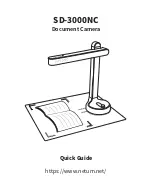
Commissioning
Operating Manual PSENvip R, PSENvip R LR,PSENvip E
1003449-EN-06
| 88
7.2.1.2
Position tool
The correct adjustment of the upper tool also depends on the tool shape. During initial com-
missioning, the upper tool should be positioned in a way that corresponds to the expected
tool class.
The web interface shows the tool with two bending lines on the
Tool Change
page. There
must be alignment to one of the two bending lines, depending on the tool class.
In the following examples, please note that the maximum width of the respective tools for
the tool class can be achieved when the appropriate bending line is used.
Examples of the correct adjustment of various tool types:
> 15 mm
Tool class 1: Pointed tools
For these tools we recommend alignment to the left-
hand bending line. The distance from the bending
line to the front segments of the protected field is
>15 mm.
< 15 mm
Tool class 2: Semi-circular tools
For these tools we recommend alignment to the left-
hand bending line. The distance from the front
bending line of the tool to the front segments of the
protected field is <15 mm. The rear bending line of
the tool is detected by the protected field. The posi-
tion of the front bending line must be considered in
the hazard analysis.
< 15 mm
Tool class 2: Stamp
For these tools we recommend alignment to the
central bending line. The distance from the front
bending line of the tool to the front segments of the
protected field is <15 mm. The rear bending line of
the tool is detected by the protected field. The posi-
tion of the front bending lines must be considered in
the hazard analysis.
Tool class 3: Stamp
The front and rear bending lines of the tool are out-
side the protected field. The position of the bending
lines must be considered in the hazard analysis.
















































